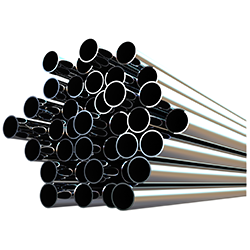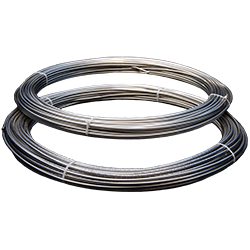Stainless Steel Razor Tubing
304 SS, 316 SS, Welded and Seamless options | Alloys by request.

Mako Products Is Your Number One Source of Stainless Steel Tubing and Stick Tubing in the USA
If you need SS tubing for industrial applications, turn to Mako Products. We provide superior stainless-steel stick tubing and stainless-steel coil tubing to meet all your needs. We offer our stainless-steel Razor tubing in both import and domestic options. We ensure that all of our stainless-steel Razor tubing meets ASTM A269 and ASTM/ASME S/SA249 standards.
Stainless Steel Stick Tubing
304 SS, 316 SS & Alloys
Seamless & Welded
.020 through .120 wall
10 or 20 foot sticks
Import & Domestic Options
Stainless Steel Coil Tubing
304 SS, 316 SS & Alloys
Seamless & Welded
150′, 200′, 300′ & 500′ Plus Coils
Import & Domestic Options
| AVAILABILITY | COST | ACCESSIBILITY | HEAVY WALL | HIGH PRESSURE | HIGH CORROSION RESISTANCE | |
| WELDED TUBING | X | X | X | |||
| SEAMLESS TUBING | X | X | X | X |
Types of Stainless Steel Razor Tubing
You have a number of choices when it comes to Mako Products stainless steel tubing, and which you choose will depend on your specific industry and applications.
Stick vs. Coil
First, you will need to determine whether you need stick tubing or coil tubing. If you choose stick tubing, we can provide it in 10-foot or 20-foot lengths. If you opt for coil tubing, choose from 150-foot, 300-foot and 500-foot lengths. We can also custom cut your tubing to suit your specific needs.
304 Stainless Steel vs. 316 Stainless Steel
Next, you will need to know which kind of stainless steel will be best for your tubing. While all stainless steel is highly corrosion-resistant and stands up to a number of challenging conditions, there are subtle differences between 304 stainless steel and 316 stainless steel to know.
304 Stainless Steel
304 stainless steel is an affordable stainless steel alloy that has most of the properties you choose stainless steel for. You can weld it with little difficulty as it is quite malleable. However, it is also strong, hardy and resistant to corrosion. This type of stainless steel does not stand up as well to saltwater as others, so is not typically used for off-shore applications or other situations where coming into contact with saltwater is likely. Due to its economy, workability and resistances, though, it is quite popular for applications like machine parts.
316 Stainless Steel
316 stainless steel is stainless steel that includes the element molybdenum, which boosts its corrosion-resistance to the level that is appropriate for marine applications. For this reason, it is often called marine-grade stainless steel. It can be used on ships, off-shore rigs, in surgical equipment and other areas where it might be subjected to saltwater or other heavily corrosive environments.
Welded vs. Seamless
Finally, you will need to decide whether you need seamless stick or coil tubing or welded stick or coil tubing. You make a welded tube by welding a strip of metal into tube form, while you make a seamless tube through extruding steel from a metal bar and pulling it through a tube-shaped die.
While welded tubes tend to be more economical, they also tend to be less corrosion-resistant. In addition, seamless tubing gives you a 20 percent increase in working pressure over the same size and material of the welded tube.
More Questions About Stainless Tubing?
For more information about different types of stainless steel tubing or to place an order, contact Mako Products now, your go-to source for stainless-steel tubing in North America.


